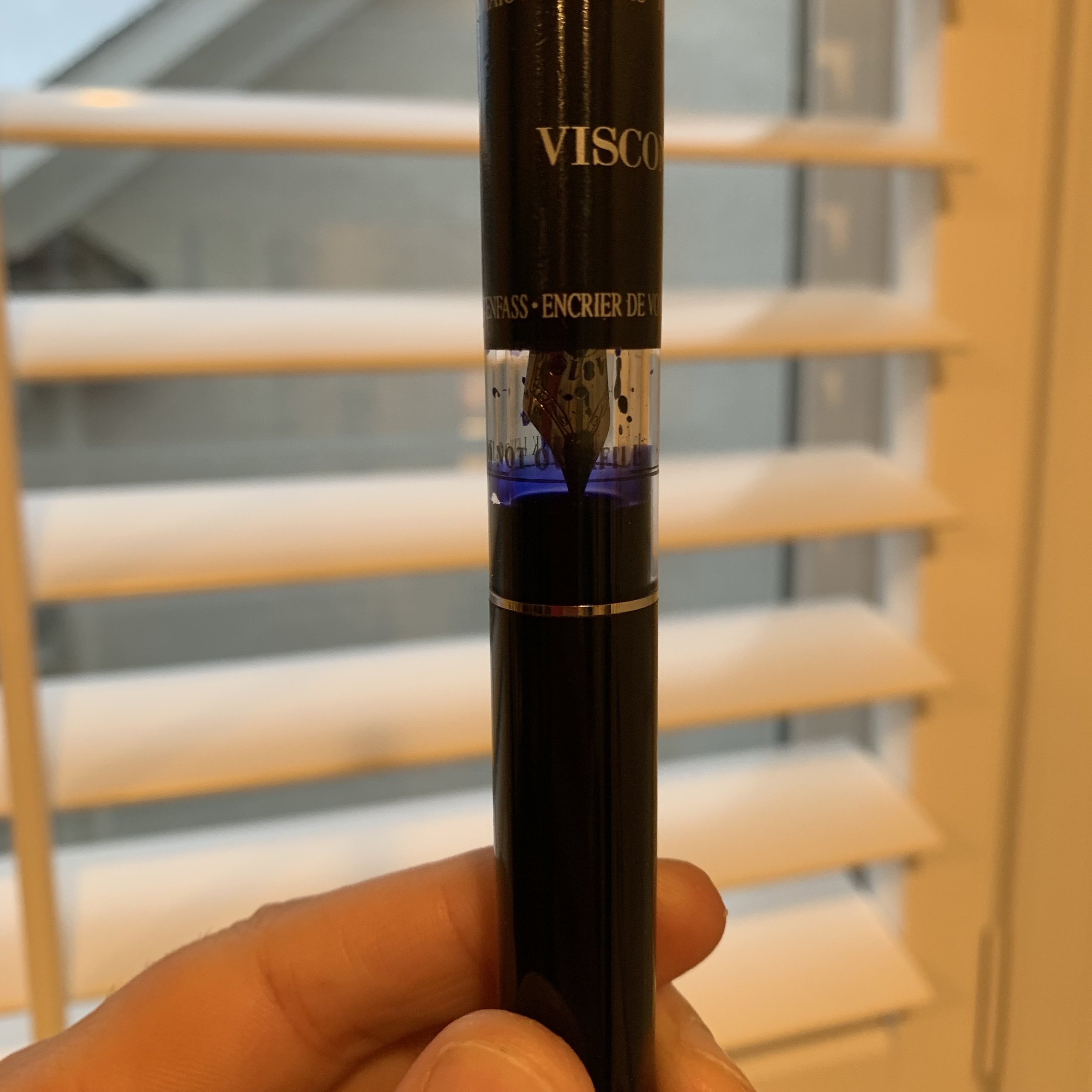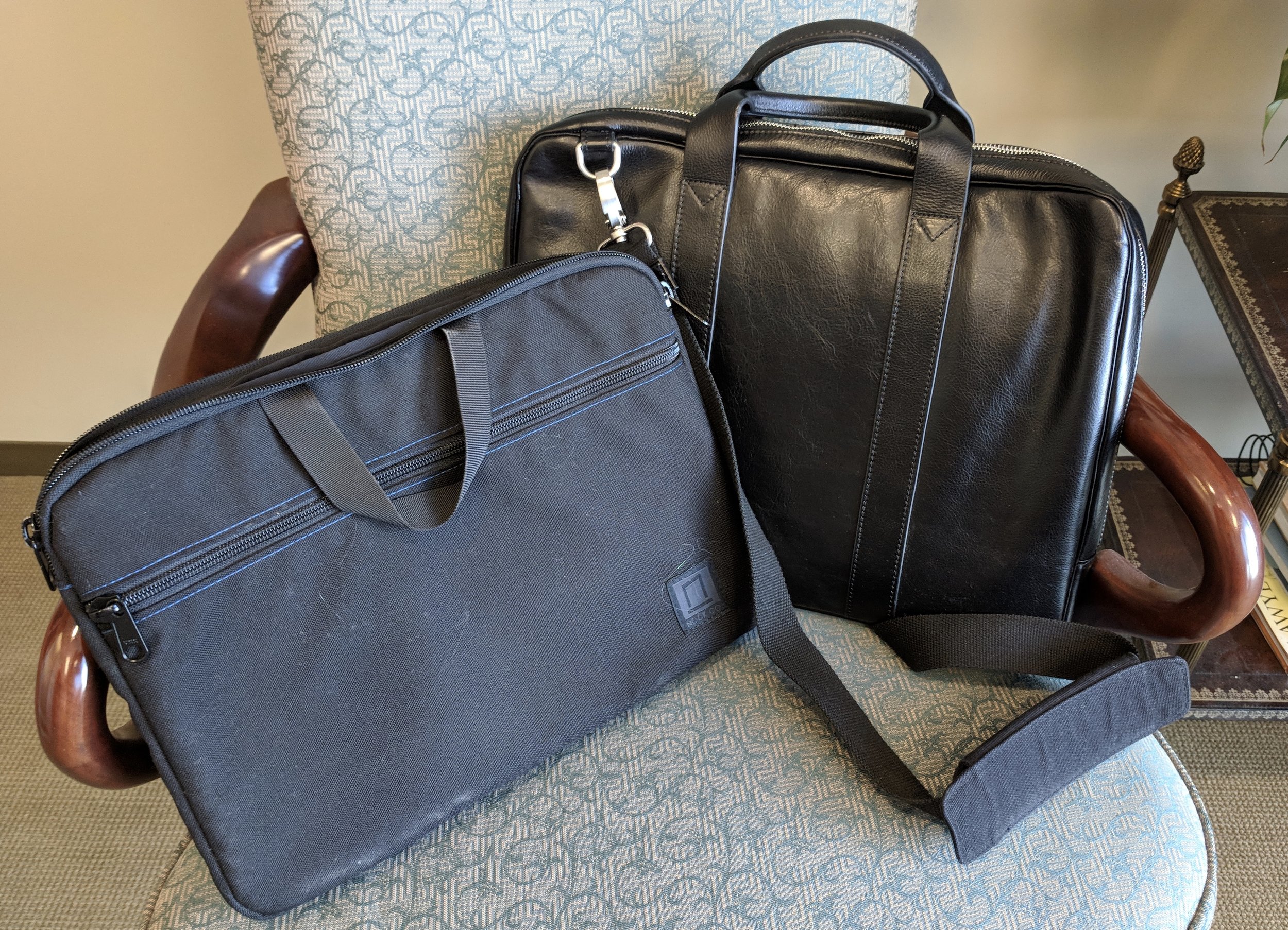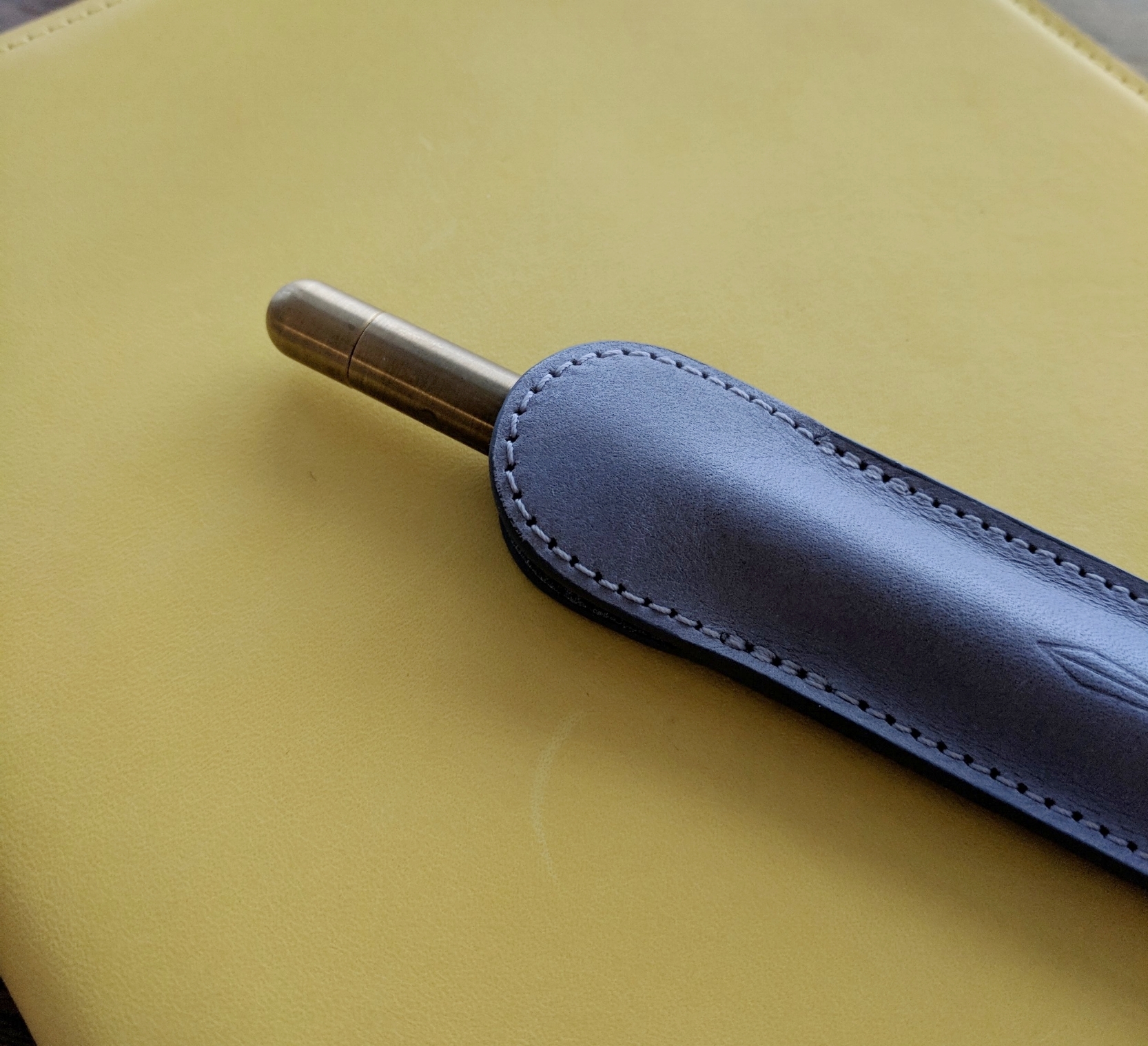Everyone who writes for the pen community gets questions about the ins and outs of traveling with fountain pens. One topic that comes up frequently is the question of filling from a bottle when you’re on the road, especially for an extended period of time. This issue doesn’t arise much for me - my work trips tend to be 2-3 days in most cases, and two fountain pens filled to capacity will easily last me that long. That said, I know there are readers out there who travel for a week or longer at a time, and may need to consider a piece of fountain pen-specific travel gear: a traveling inkwell or ink pot. Also, if you favor piston-fillers with larger nibs, such as the Pelikan M800 or the Montegrappa Extra 1930, or pens like the Visconti power-fillers that are just difficult to fill to capacity, these devices can be quite useful and will make it easier for you to get a full fill of ink.
You’re pretty much limited to two options: the Visconti Traveling Inkwell or the Pineider Pen Filler Inkwell. Visconti created this highly specialized piece of equipment years ago, in 1997, so the idea has been around for quite some time. After Visconti founder Dante Delvecchio left the company to join Pineider, Pineider released their own version, which holds 5ml more ink than the Visconti and costs less than half the price. (The Visconti Traveling Inkwell holds 5ml of ink, and the Pineider Pen Filler holds 10ml.)
Fill ‘er up! It’s hard to see, but both the Visconti Traveling Inkwell and the Pineider Pen Filler feature a rubber gasket on the inside that forms a seal.
Using these inkwells are fairly simple once you grasp the concept, which can seem confusing and a bit counterintuitive (not to mention risky) at first. To start, you remove the cap of the inkwell and fill with your ink of choice to the indicator line, using the supplied eyedropper (or your own syringe or pipette).
When you’re ready to fill, Insert the pen and press gently until you feel the pen come to a stop. The section should form a secure seal against the rubber gasket inside the inkwell, allowing you to invert the inkwell (yes, you heard me correctly) while you turn the piston or converter. You will get a full fill of ink into most pens, which to me is the primary selling point of these contraptions. Note: for vacuum fillers, make sure your seal is TIGHT and hold onto the inkwell securely when you depress the plunger to fill the pen. Otherwise, you may get the “rocket effect” when the inkwell (and all of the ink in it) goes sailing across the room, coating your walls, carpet, etc. It may also be preferable to try outside for the first few times until you get the hang of it.
Check out how much ink I was able to get into a Montblanc 146! The best part? Hardly any ink on the section afterwards. You’ll only have to wipe off the nib and the very end of the pen where the ink meets the feed.
In terms of actual traveling, I’m honestly a little nervous about flying with these things, only because you’re technically supposed to put all liquids (including fountain pen inks) into single plastic bag in order to get past security. Both of these inkwells have a “stopper” closure, not a threaded cap, so I have some concern about leakage. For the record, the stopper on the Pineider inkwell feels a lot tighter and more secure than the Visconti. I’ve included pictures of the Pineider in action below, featuring a Sailor Pro Gear. I’ve never been able to get that much ink into a Sailor Converter without syringe filling!
Takeaways and Where to Buy
I like both of these products, but perhaps not for their stated purpose of traveling. Rather, for me their true utility lies in the ability to swap favorite inks (mostly Sailors) from the hard-to-fill “flat” bottles into a different format that will let you use piston-fill pens with larger nibs, such as No. 8s. They’re also a great way to make sure your pens are filled to the brim if you’re preparing to leave on a trip or attend a class/meeting where you will have to do a lot of writing.
I acquired both of the inkwells featured in this review from Pen Chalet. The Visconti Traveling Inkwell is currently priced at $70 MSRP, with a street price of $56. While it’s certainly not inexpensive, I recall these being priced well north of $100 when they first came out several years ago. Pineider has priced their version lower at $25 MSRP / $20 street price, and to be honest it’s probably the product I would advise most people to buy. While its overall design lacks some of the elegance of the Visconti and feels a bit insubstantial, it’s the more practical choice for what’s going to be a relatively limited-use purchase for most people. I have, however, read reports that certain Visconti pens don’t fit well into the Pineider inkwell, specifically those with the “hook” closure system, so if you have a large Visconti collection stick with that brand.
Side Note: Though you will eventually run into the same problem as you do with ink bottles once the ink level gets too low, many people forego the traveling inkwell in favor of ink sample vials or the 4oz version of these smaller Nalgene bottles. In addition to being extremely inexpensive, the caps on both are quite secure and have survived many a trip through TSA screening.
Disclaimer: This post contains affiliate links. I purchased both inkwells featured in this review from our sponsor Pen Chalet using store credit generated through Pen Chalet’s affiliate program.











